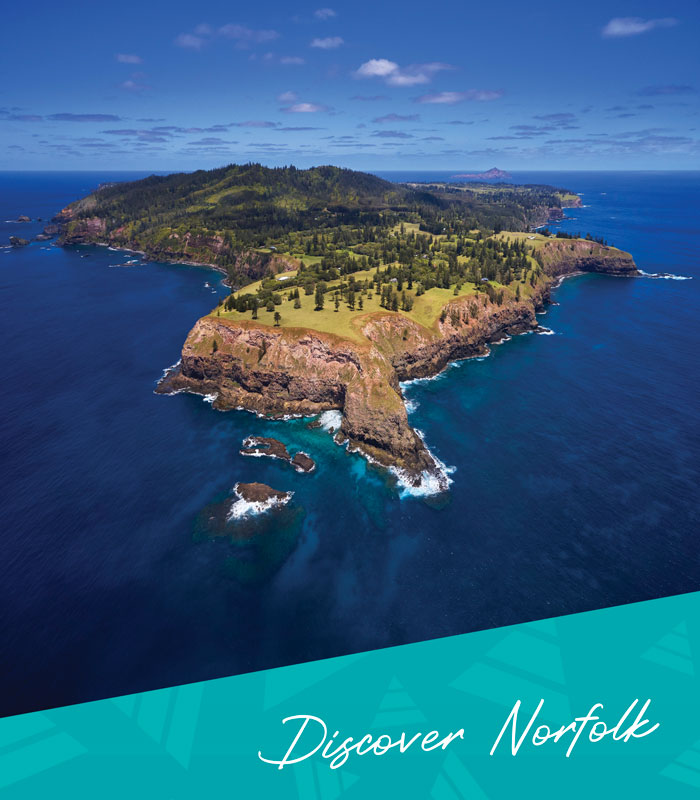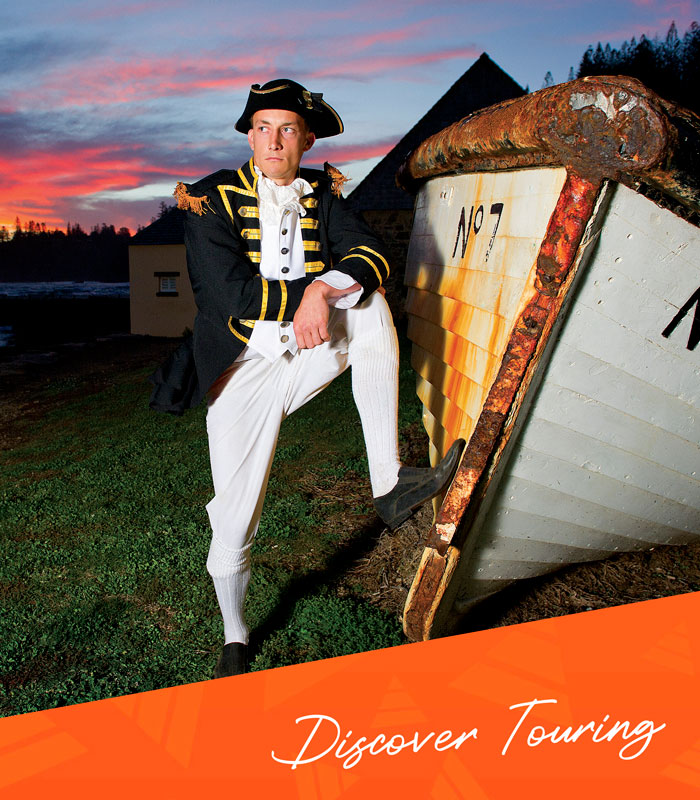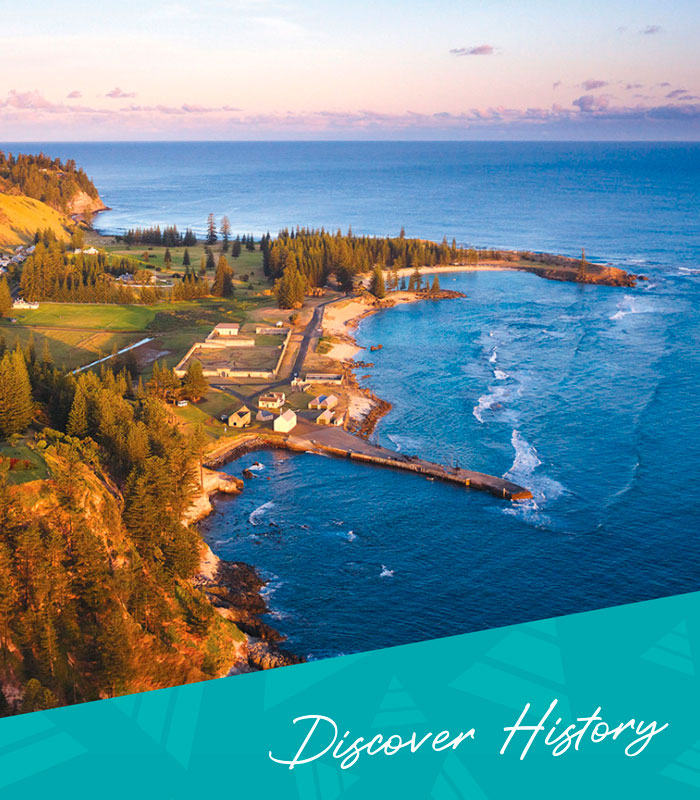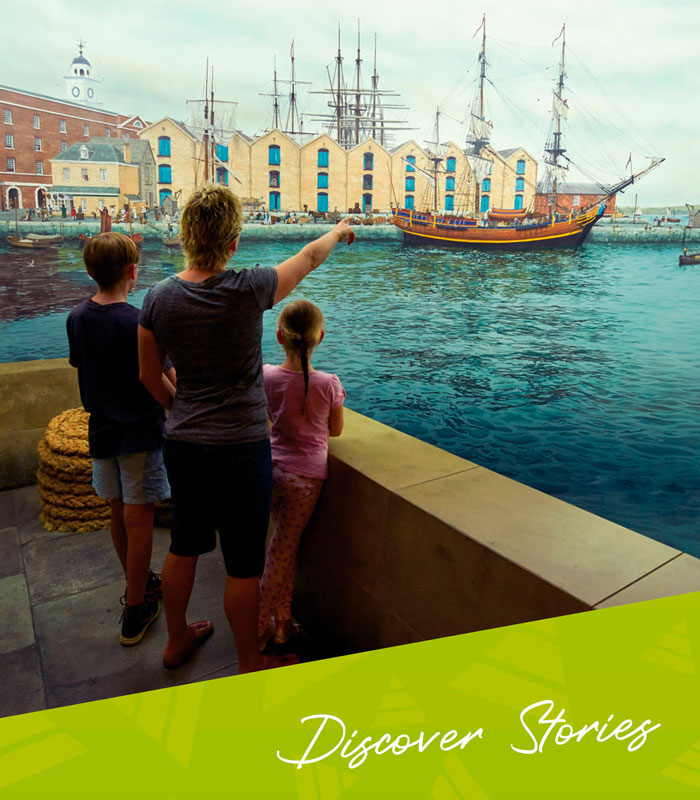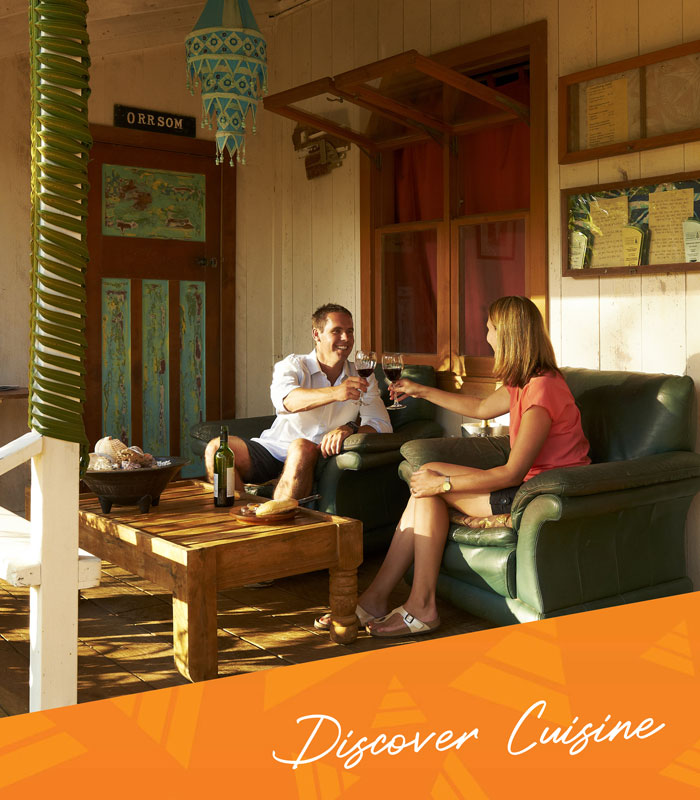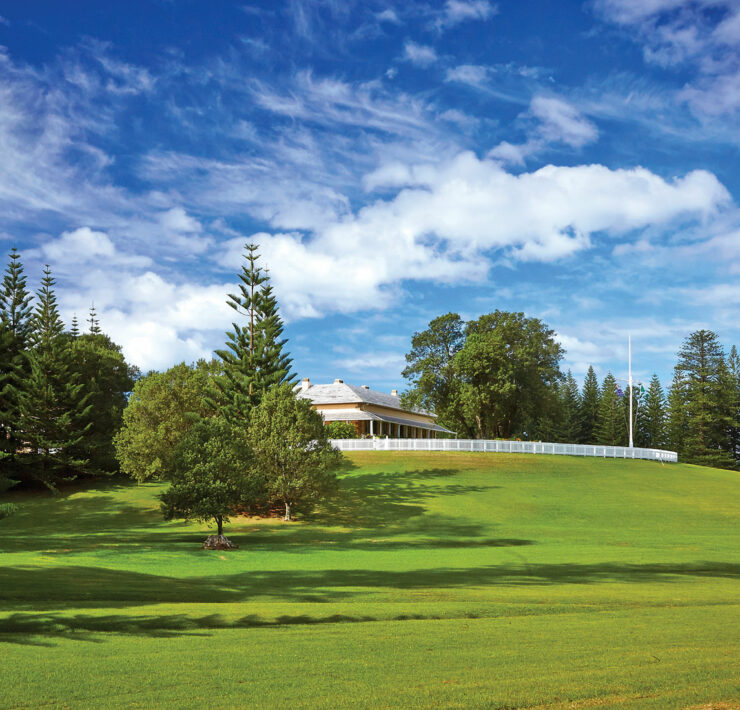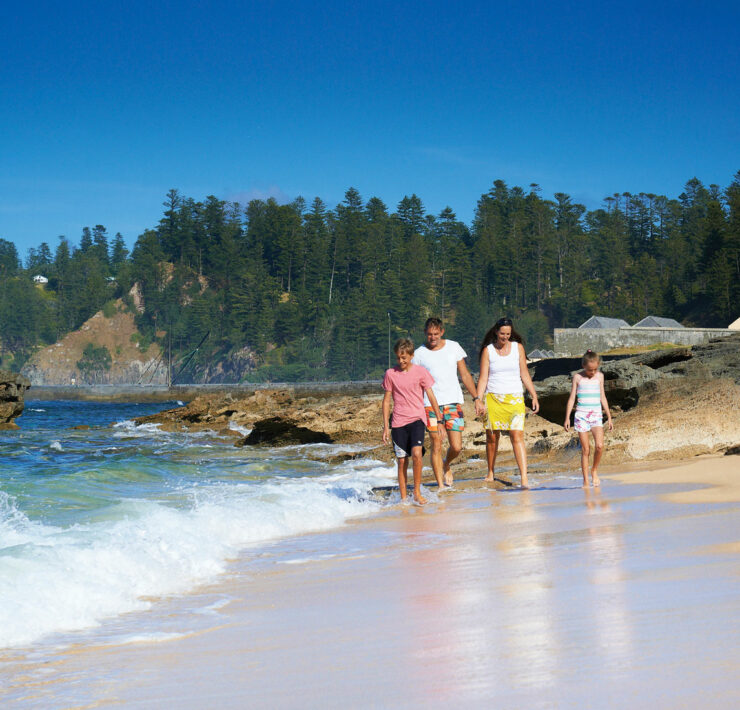
The settlements of Kingston and Arthur’s Vale have been a heaven and a hell, but also a refuge. The fertile vale named for the first New South Wales Governor Arthur Phillip, has a wide flat valley floor which meanders to the north-west from the cluster of buildings at The Landing Place to Watermill dam. The journeys of many people are written into the buildings and landscape of Kingston and Arthur’s Vale, and today as visitors walk where so many have trod before them, Norfolk’s stories come to life.
To the east of the stone settlement buildings, Norfolk’s Polynesian connection lay hidden under the sands and pines for up to eight hundred years.The calm shelter of sand-fringed Emily Bay, nestled behind a protective coral reef, must have seemed a refuge to weary Polynesian voyagers seeking a new home, or a respite on a long sea voyage to or from New
Zealand. In 1997 the stone pavement findings of their marae or meeting place in the dunes behind Emily Bay helped to confirm Lieutenant Gidley King’s theory that Norfolk had been settled by Polynesians, as he had found plantains growing in Watermill Valley and the remains of two canoes at Ball Bay.
At dawn, looking south-east from the banks of Watermill dam, little imagination is needed to evoke the lives of previous settlers. The overshot watermill, remains of which lie below, busily produced up to 111 bushels of wheat and 36 bushels of maize each day to feed the expanding second penal settlement. From this perspective, all is quiet and still, almost golden in the morning light. As cattle graze placidly on the common, or drink from the stream that has watered Arthur’s Vale for hundreds of years, the strutting geese upstage the timid, busily-feeding migratory birds that depend on the Kingston wetlands to break their long journey.
Walking through the common, time wanders to and fro through the lives of convicts, farmers, marines and civil servants. During the first penal settlement of 1788, prisoners were housed in small timber huts that lined the foreshore of Kingston. The sides and valley floor of Arthur’s Vale accommodated snug one-room cottages, barns, a stable or a wool shearing house – buildings that attest to the need of both settlements to farm, grow and produce.
Perched on top of a steep knoll are the stone chimneys of simple wattle and daub cottages, long rotted away, from the second colonial settlement of 1825 to 1855. There is a one-room calcarenite stone cottage tucked into the gully below what is now Flagstaff Hill, which dates further back to the 1790s. One can try to imagine who might have walked out the front door. He or she was perhaps from the band of just twenty three souls who in March 1788 landed on Norfolk with the mammoth task of starting a settlement. Or maybe this hut was the temporary home of an enterprising marine, given the option to take a 60 acre land grant on Norfolk Island upon discharge in 1791. Or possibly, the hut once belonged to a ‘ticket of leave’ man – a convict who had served his time, and could enjoy the independence of his own cottage with a wife and family.
The huts, buildings and gardens of the first settlement were all burnt to the ground to discourage other travelers seeking refuge on the island, though the stone foundations of the structures were later modified or built upon by the next settlement. By 1807 many settlers, like former convicts Edward Garth and his wife Susannah, had become prospering farmers with growing families, selling barley, wheat and swine flesh to the stores. Regardless, by 1814 the decision to abandon the Norfolk settlement had been enforced. People and their lives were shipped off to start all over again in Van Diemen’s Land. Without human occupation in Arthur’s Vale, vegetation, rats and pigs dominated the landscape, until a very different kind of settlement was established in 1825.
Continuing along the stone embankment that marks the path into Kingston, the next settlement comes to life. The charming and orderly village-like remains of the Surgeon’s cottage and Civil Hospital, are incongruous reminders of a brutal prison settlement, for it was punishment – not farming – that was uppermost in the governing officials’ minds. Norfolk Island was reopened in 1825 as a place to offload a festering collection of re-offenders: ex-convicts, old lags and wily newcomers who had become an increasing burden to the New South Wales colony. The mottled grey stone of the hexagonal New Prison that dominates the landscape provides a precise and solemn reminder of the intent to cause human suffering and degradation.
As the path nears Pier Street, quaint stone steps rise on the right up to the kitchen of the Surgeon’s cottage. This two room cottage with its original stone oven is just one of the rich historical layers of this site. The first two primitive government houses of the first settlement were built on this rise overlooking The Landing Place. The sewage outlet jutting out of the grey stone wall below the hospital is a reminder that from 1825, the stench of a horrific penal settlement broke the natural beauty of Kingston and Arthur’s vale for a tumultuous thirty years.
Before turning towards the jetty, the busy hub of both settlements, one can look across to the orderly, elegant row of civil and military buildings running west to east, intact and in use today. The layout and building design of the second penal settlement exemplified Georgian society and architecture, with the structures standing as monuments to British colonisation. The buildings along Military Row, now called Quality Row, were commissioned by successive commandants and designed by renowned Royal Engineers such as Lieutenant Henry Lugard.
The layout of the town was typical of a purpose-built penal settlement, and reflected the social order of the day. The military and civil officers and the clergy, sometimes with wives and families, were separated from the convicts by the swampy ground. The diary of Elizabeth Robertson, daughter of a Superintendent of Agriculture in the penal settlement, testifies to the efforts made to recreate the English social customs, by common practices such as tea and visiting. The creation of elegant gardens was also a popular practice during the era of Commandant Major Anderson, who in the 1830’s crafted a gracious fifteen acre parterre garden in the grounds below Goverment House. From his grand residence on the top of Dove Hill, he overlooked both military and convict precincts from his front verandah. The genteel veneer of Quality Row and Government House deeply contrasted the industrial reality of what was going on across the swampy wetlands. Overseers and convicts, some in chains, laboured from the windmill on the east, to the stone quarries on the foreshores, to the salt house and lime kilns along Slaughter Bay. They toiled in the saw pit of the lumber yard, the blacksmith’s shop and the crankmill. The penal settlement was a hive of activity.
In 1856, with the prison settlement closed, the Pitcairn Islanders arrived. A mixture of Tahitian Polynesian and Anglo Saxon, they had journeyed 3427 nautical miles from Pitcairn Island, coming ashore to their new Norfolk Island home on a wet and miserable day. For many of them, the stern stone buildings of Kingston were to become their homes for at least the next fifty years. Just as this story has done, the Pitcairners skirted around the smelly prison and foreboding compounds through which thousands of men had passed, from hardened villains, Irish dissidents, the cunning and the simple poor, to officious and efficient officials and kind medical officers.
Mr Stewart, the caretaker in charge, greeted the Pitcairners when they disembarked from the Morayshire, and tried to both warm and cheer them with tea in what was by then, a rather gloomy and draughty Government House. Eleven trustworthy convicts remained from the closed penal settlement to help perform the changeover, and it was they who titillated the newcomers with ghastly tales of mutiny, mayhem and murder. They told stories of the infamous Jacky Jacky Westwood, of Bloody Bridge and even of escaped convicts in hollow trees. They also tried to explain to the newcomers the rudiments of farming and the management of strange animals such as cows.
And so, the Polynesian connection came full circle. After 1856 other travelers arrived by whaling ship, cargo vessel or by plane – some to stay, some to visit briefly and then continue their journey. The buildings of Kingston now hold the working, domestic and recreational lives of the present Norfolk Islanders … but in the massive stone walls of Kingston and Arthur’s Vale, the visitor can still sense the stories of past lives if one cares to pause, look and wonder.
____
Image Credit: Robin Nisbet
www.robinnisbet.com
____
Article content disclaimer: Article first published in YourWorld, Volume 04 Issue 01, 2014. Please note that details of specific travel, accommodation and touring options may be outdated. References to people, places and businesses, including operating days and times may be have changed. References to Government structure and Government businesses/entities may no longer be applicable. Please check directly with businesses and/or Government websites directly rather than relying on any information contained in this article before you make travel arrangements.




